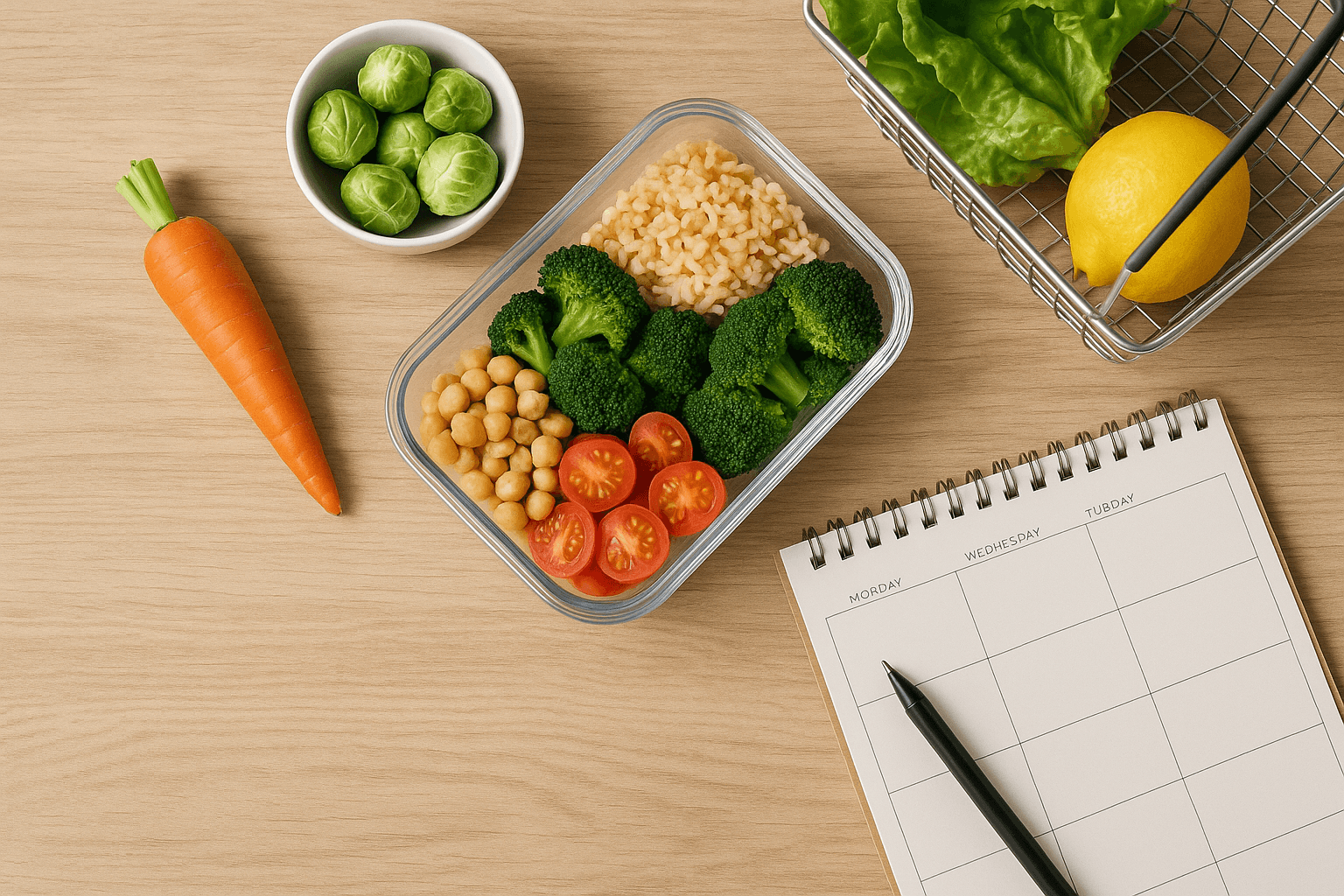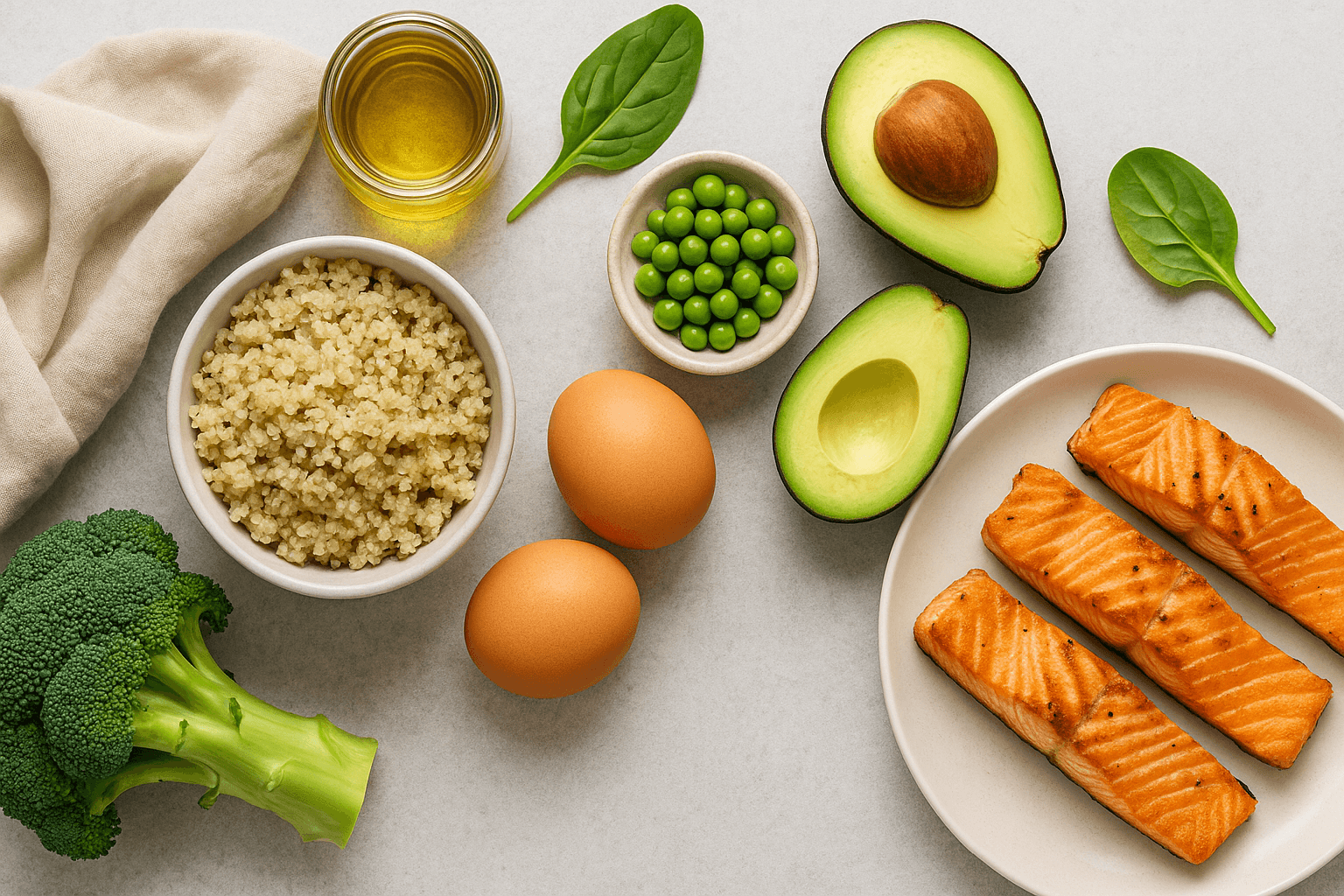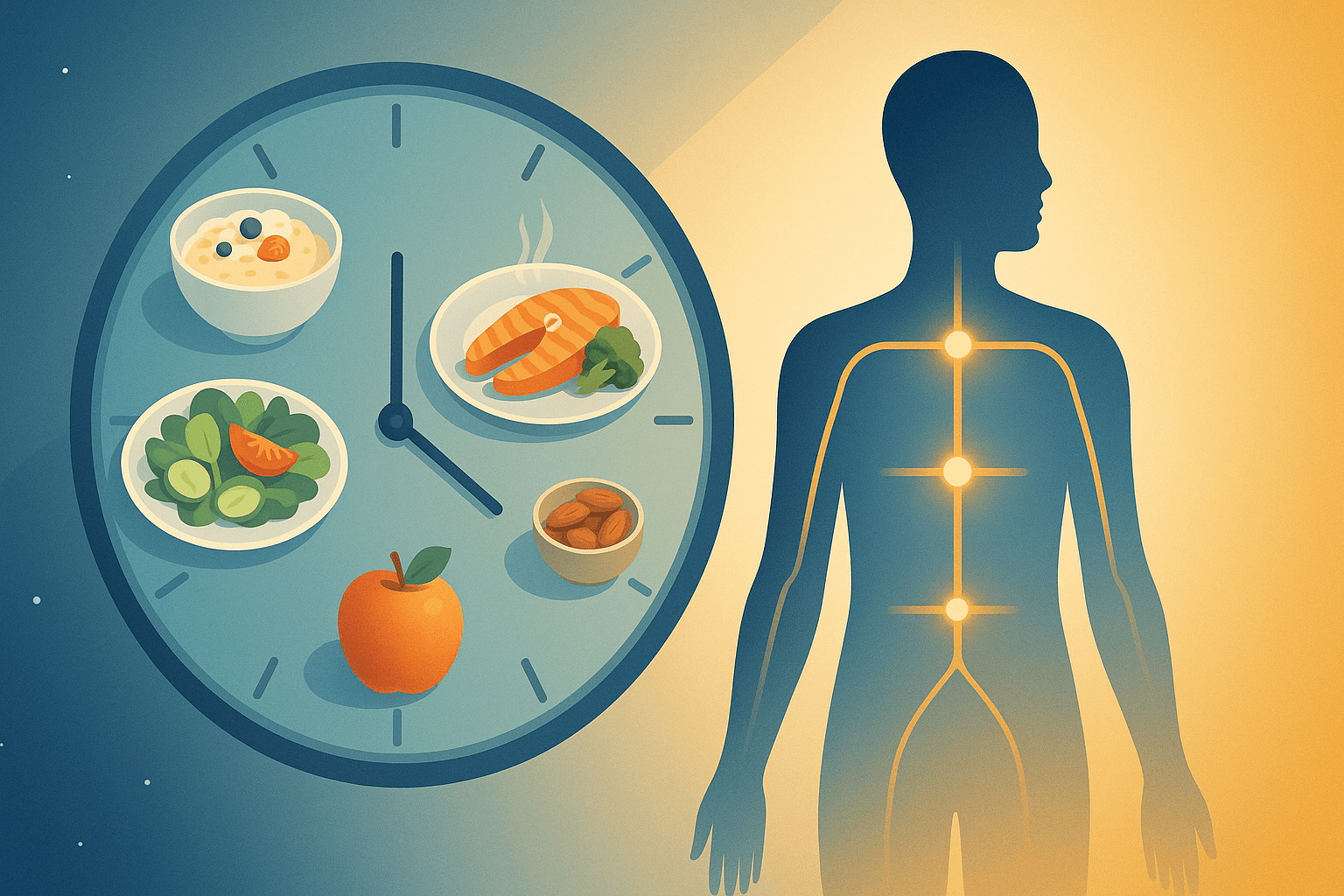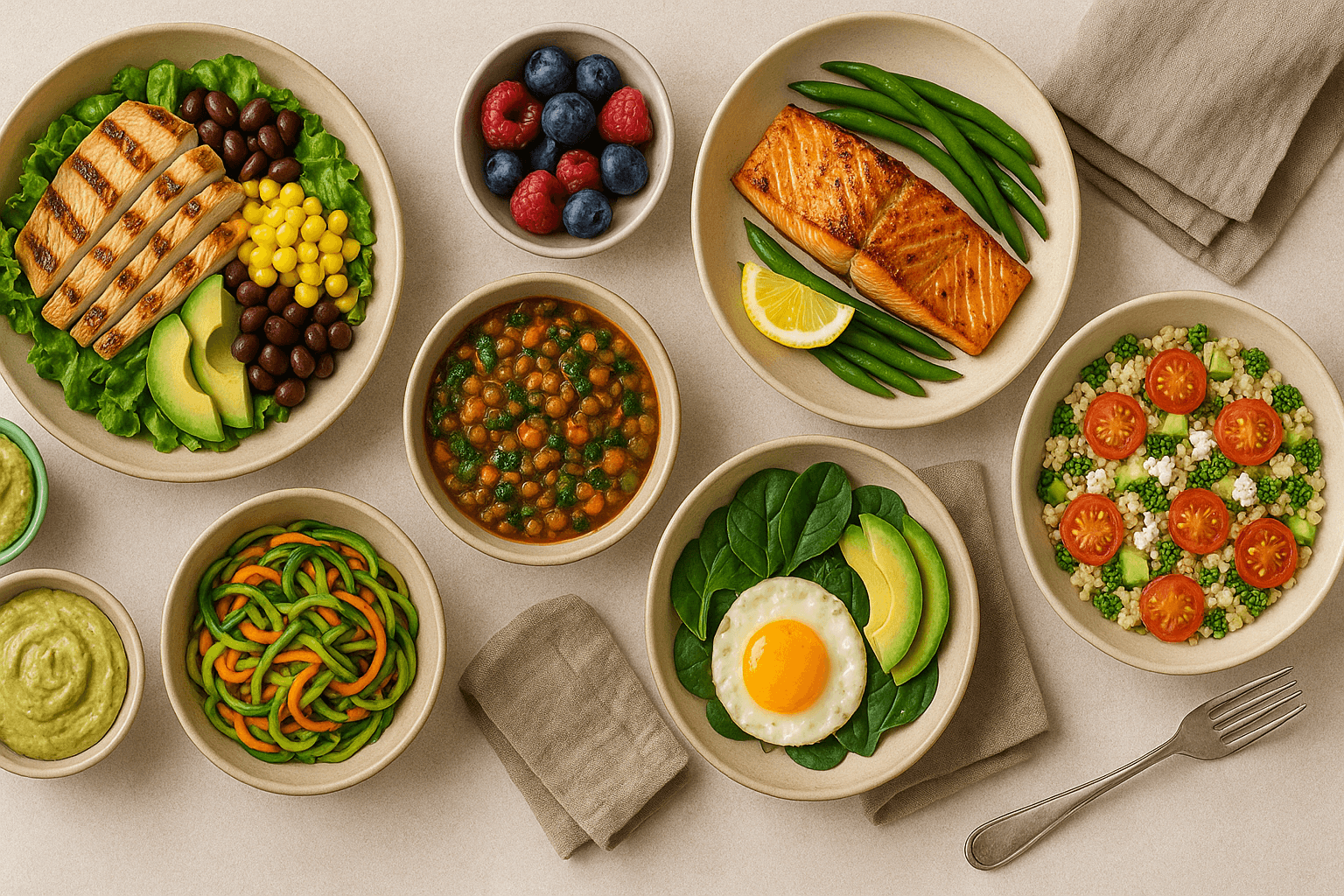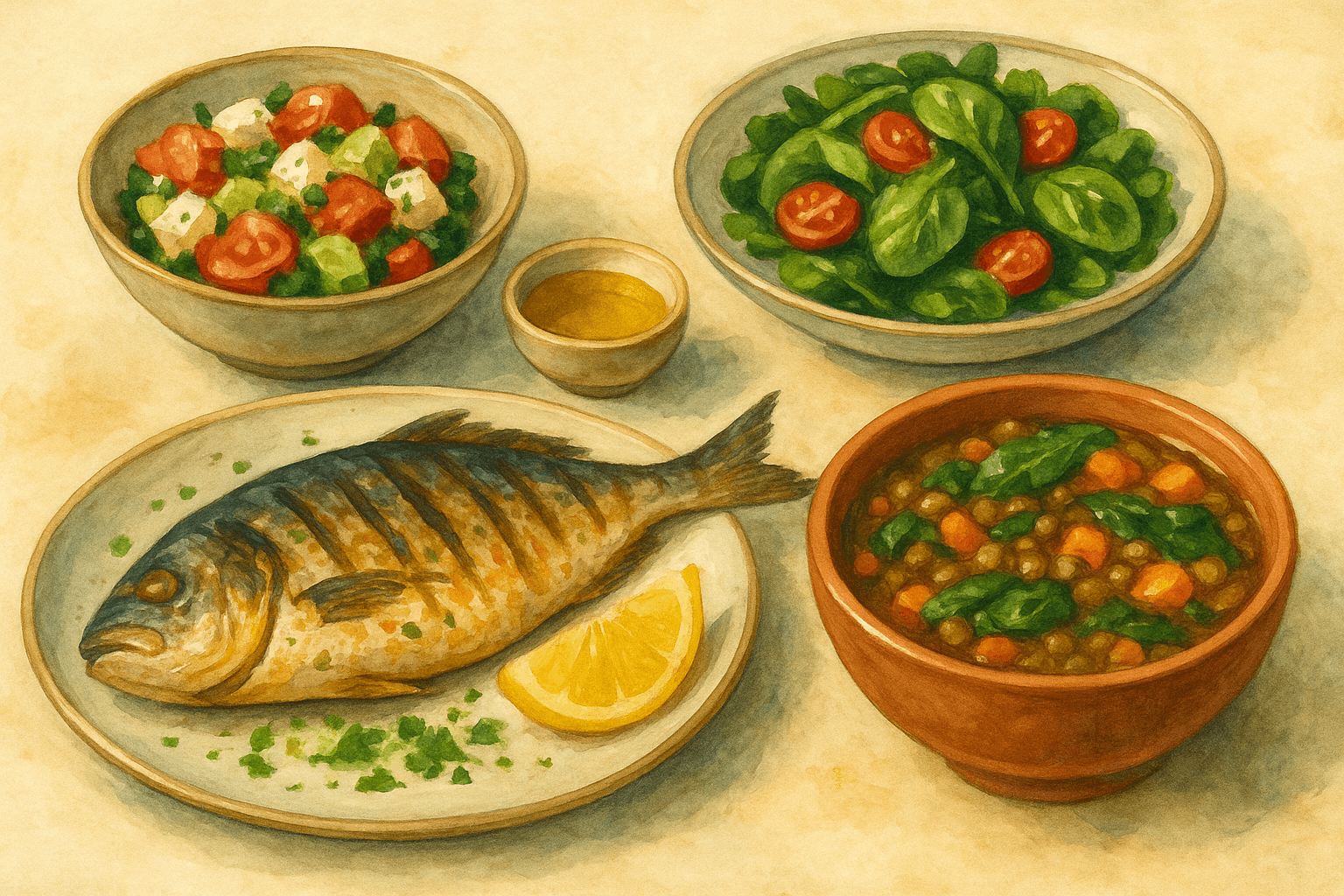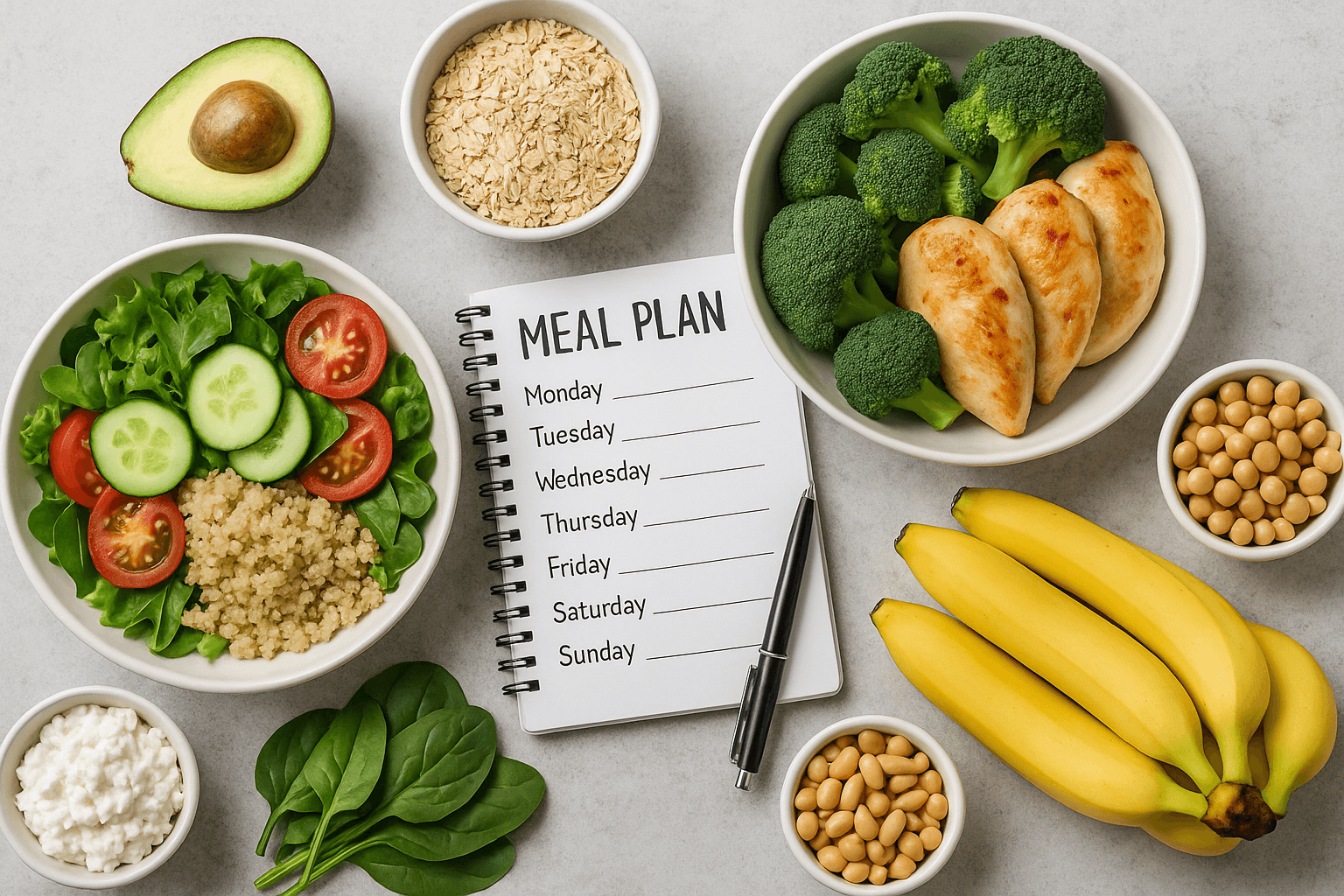Meal Planning Mastery: Your Complete Guide to Flexible, Nourishing, and Stress-Free Eating
Published on July 26, 2025
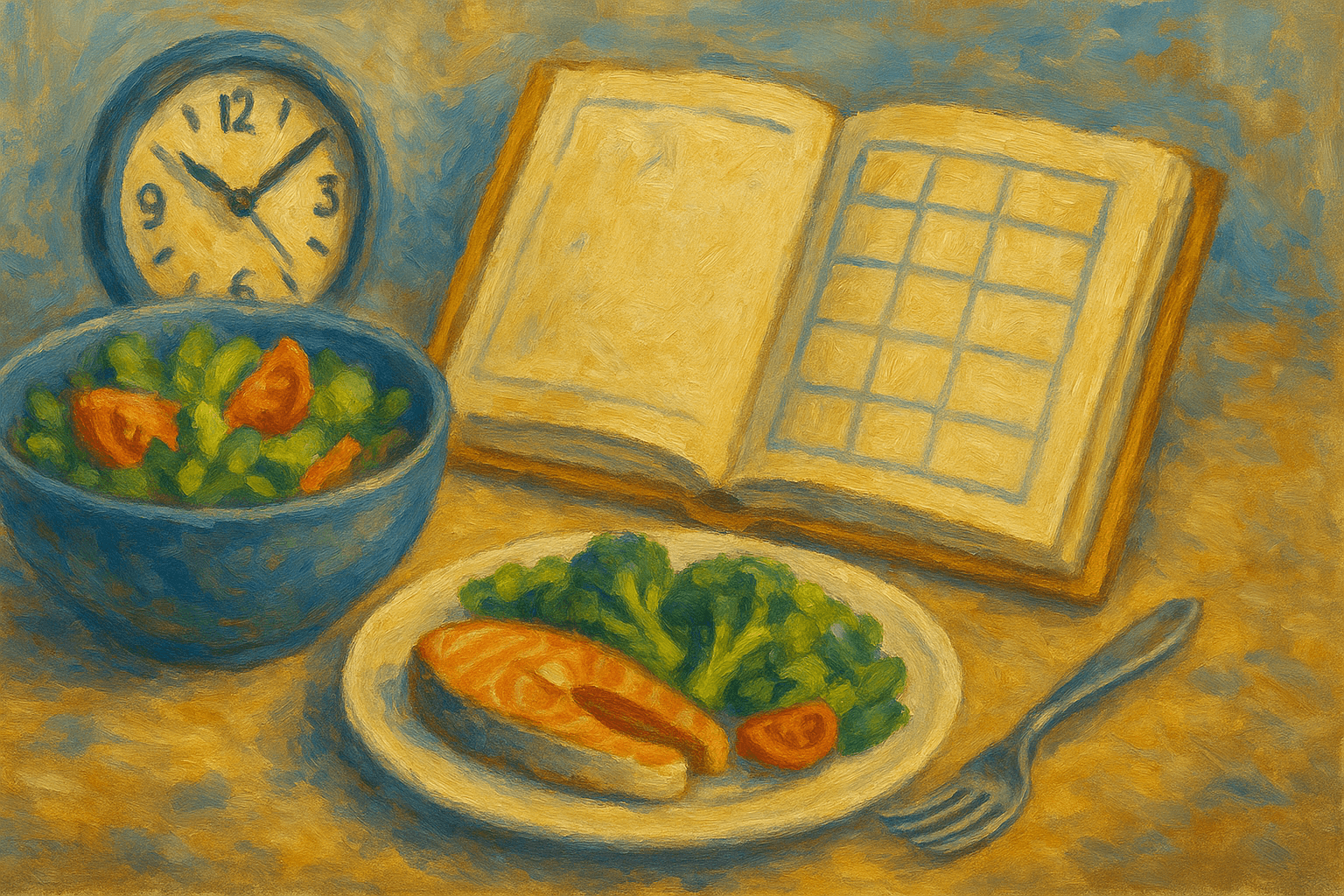
Meal planning. A single mention can conjure up visions of neatly arranged, matched meal schedules or rows of organized glass containers, or, depending on who you are, feelings of panic about where to begin. But as a dietitian who’s helped hundreds of people find a happier, healthier relationship with food, I’m here to clear the air: meal planning is for everyone, and it might just be one of the easiest, most life-changing habits you ever form. Drop any notion that there should be perfection, Instagram-worthy fridges and inflexible schedules. Real meal planning is about streamlining your life, making the meals you put on the table healthier and your days a little less stressful.
Whether you’re balancing opposing tastes and schedules as a parent, working all kinds of insane hours as a professional, attempting to cook in a microscopic dorm room as a student or just looking to save some money and/or eat healthier, meal planning makes life a little bit better. It allows you to take charge of your eating, cuts the pre-dinner jitters and enables you to accomplish a meal — not struggle against it. The key is flexibility and self-kindness, not rigidity.
Why Meal Planning Is So Important (and Who Needs It?)
Because if you’ve ever been at the end of a long day, staring blankly at your refrigerator without a clue of what to prepare, or throwing out that wilted bunch of spinach you bought with the best of intentions, you’re already familiar with the pain of what’s known as “winging it.” If you’re suffering from kitchen chaos, meal planning is the cure. It’s the bridge between you and reclaiming your time, cutting down on food waste and looking forward to meals — without spontaneous messages or constant takeout.
Saves Time
Don’t have to hit the grocery store everyday and stress last minute. Food shopping is less burdensome, and “what’s for dinner?” moment vanishes.
Relieves Stress
If you have a plan already in place, you can easily unwind after you come home from work or school, and not worry about what dinner will be. You get to be spontaneous on your own schedule.
Provides Better Nutrition
By planning your meals ahead of time, you can purposefully incorporate more vegetables, whole grains, healthy proteins and a wider variety of foods you might be more likely to skip.
Reduces Food Waste and Saves Money
You only buy what you will eat for the week (or few days), use what you have, and prevent losing food in the back of the fridge.
Works for Any Goal
Whether you need to lose weight, manage a health condition, save money, or just feel better, dinner planning provides the structure to help you achieve your goals, without sacrificing the foods you love to eat.
How to Begin Meal Planning (With No Overwhelm!)
You don’t have to detail every meal and snack, or stick to some rigid schedule. Begin with a basic system and make it your own. The best diet is the one you’ll actually stick to!
Set Your Goal
Decide why you want to take up meal planning. Do you have plans to eat more vegetables, save money at the grocery store, finally not skip breakfast, or explore new recipes? Your “why” will dictate how and what you do in your planning.
Pick Your Planning Period
Some plan week by week; others prefer to just think in terms of a few days. If seven days seems daunting, begin with planning three dinners and work up from there. You can even partially plan!
Make a Favorites List
Record the meals that (you and) your family eat most frequently for breakfast, lunch, dinner and snacks. This “menu bank” provides you with instant inspiration and helps in rotating old favorites to keep things exciting without completely reinventing the wheel week after week.
Scan Your Schedule
Fast meals or leftovers are the order of the night with busy evenings. If you know you won’t be home until late, plan something you can prep ahead of time, or reheat in minutes. On weekends or quieter days, experiment with a new recipe or something more time consuming.
Inventory Your Pantry
Check your fridge, freezer and pantry before you shop. Plan a few meals that use what you already have on hand — whether that’s half of a bag of rice in the pantry or those lentils from a few weeks ago or that half-opened bag of frozen vegetables that are rapidly losing their color. This alone cuts down costs and food waste.
Build a Realistic Grocery List
Order your list by section — produce, grains, proteins, dairy, pantry staples — and make shopping less overwhelming. Making room for flexibility—if you find a gorgeous-looking vegetable on sale, slide it into your plan!
Meal Planning Styles: Finding What Works for You
Which is why there is no single “right” way to meal plan. “Try out different systems, and don’t be afraid to combine or alter depending on what your life looks like, in the end it’s all about finding what works best for you:
Weekly Planner
Plan 5–7 dinners for the week, a couple of simple breakfasts and lunches. Make sure to always have a handful of “emergency” meals, such as eggs and toast, soup and sandwiches, or pasta with veg, for those days when nothing goes according to plan.
Batch Cooking / Meal Prep
Select a day (or two) a week to cook in big batches grains, proteins (chicken, tofu, beans), roasted and steamed veggies. Divvy them up for grab-and-go lunches or quick, ready-to-heat dinners. This is great for when you’re busy or you want to “set and forget” your meals for a few days.
Theme Nights
Designate a theme for each day — Meatless Monday, Taco Tuesday, Stir-Fry Friday or Soup Sunday, for example. Themes bring structure and simplify the search for recipes, and they keep things members of your bub interested.
Flexible/Minimal Planning
Don’t want to organize every detail? Select a handful of dishes for the week and stand by for on-the-fly concoctions; stock basic ingredients. Eggs, frozen veggies, canned beans, tortillas, a few fresh items — endless combinations.
Building a Balanced Meal Plan
The best meal plans are those that are filled with delicious, nutritious, satisfying food. Here is a guide you can use for all meals:
Protein: Mix it up — chicken, fish, tofu, eggs, beans, Greek yogurt, lean meats or lentils.
Whole Grains and Non-Starchy Veggies: Go for brown rice, quinoa, oats, sweet potatoes, whole-wheat pasta, corn.
Vegetables: The more, the better! Add fresh, frozen or canned vegetables for color, fiber and nutrients.
Healthy Fats: A few nuts, a drizzle of olive oil, some avocado, or seeds make for a satisfying, rich dish.
Fruit: Include for breakfast, snacks or dessert.
Planned Treats: Yes—plan something homemade such as chocolate, baked at home goods or pizza night. It’s all about balance when it comes to long-term success.
Pro tip: Follow the “plate method”—fill half your plate with veggies, a quarter with protein, a quarter with grains or starchy veggies, and sprinkle on some healthy fat.
Example Meal Plan: A week of inspiration
Breakfasts:
Berries (ideally mixed with walnuts) and overnight oats, if you’re one for a make-ahead, fiber-rich start.
Scrambled eggs with spinach and whole-grain toast, for a protein and veggie boost.
Greek yogurt with fruit and pumpkin seeds, smooth and filling.
Busy Morning Green Smoothie with Banana, Spinach and Peanut Butter.
Lunches:
Quinoa and chickpea salad with cucumber, tomato and feta, with a drizzle of olive oil.
Wrap a 6-inch whole-grain tortilla with turkey and avocado with crunchy carrot sticks on the side.
Brown rice bowl with tofu, steamed broccoli, shredded carrot and sesame dressing.
Any remaining veggie stir-fry over soba noodles, hard and fast and colorful.
Dinners:
Grilled chicken breast, sweet potato wedges and roast broccoli.
Lemon Dill Salmon Fillet baked in the oven with Brown Rice and Asparagus.
Vegetarian chili with kidney beans, bell peppers, and corn, served with cornbread.
Shrimp stir-fry with snap peas and red peppers over brown rice.
Homemade pizza night around our place — whole wheat crust (plus a few slices of white, my favorite, for the little one), tomato sauce, mozzarella, and, in a heap toward the center, broccoli, mushrooms and onions.
Carrot lentil soup with celery and spinach, green salad.
Pasta primavera with zucchini, tomatoes, peas and fresh basil.
Snacks:
Apple slices with all-natural peanut butter for energy and crunch.
Mixed nuts and dried fruit, in single-serving bags.
Hummus with strips of bell peppers, colorful and satisfying.
Greek yogurt with a few handfuls of berries, chia seeds on top.
Troubleshooting: Common Roadblocks & Solutions
“I don’t like to eat the same things.”
Grab a new recipe to add to your rotation each week, play around with global cuisines or just mix up the sauces and seasonings in recipes that you love.
“I have no time to cook.”
Make and freeze or refrigerate grains and proteins in big, simple batches ahead of time, and keep whatever frozen or canned veggies you like on hand, along with some healthy convenience foods like rotisserie chicken and pre-washed greens so you don’t feel bad.
“Family is picky.”
Have “build-your-own” menus, including those for taco bars, pasta bowls or salads, so each person creates a plate they’re thrilled to eat.
“It’s expensive.”
Plan meals around what’s on sale, buy in bulk, especially staples like oats and beans, and use frozen fruits and veggies (they’re just as healthy!), and they eat at home more than they eat out.
Planning Meals for Special Diets and Goals
Weight Loss: Pre-portion snacks and meals with veggies and fiber-packed choices for satiety, plan in "treat" foods in moderation so that you don't feel like you are missing out.
Muscle Gain: Add protein to every meal, which can be paired with high-protein snacks; a better time to eat is before and after workouts for energy and recovery.
Vegetarian/Vegan: Vary your sources of protein, such as beans, lentils, tofu and tempeh, and experiment with ethnic dishes. Consider nutrients such as B12, iron, calcium and omega-3s.
Diabetes or Heart Health Foods: Whole Grains, lean proteins, healthy fats and lots of fiber filled veggies and fruits. Limit added sugar and salt.
Forming a Lasting Habit of Planning Your Meals
Take it one step at a time: plan three dinners this week, or do the prep for lunches for just two days. Level up as you progress — and remember, consistency is more important than perfection. Involve everyone in the household, keep a list running of favorite recipes, and see if you can make planning a weekly ritual. Remember, there’s no “failing” when it comes to meal planning — every little bit counts as a win.
Meal planning, like any skill, becomes more simple to perform over time. Before long, you’ll be spending less at the store, throwing away less food, and genuinely enjoying meals more than ever.
Final take: It’s meal planning time and that’s a little self-care.
Meal planning doesn’t have to be a way to make your life even more rigid. It’s about setting aside a moment for yourself each week so that your days feel more settled, even though everything is disrupted. It’s one of those practical acts of unignorable self-care — the kind that clears mental space, allows you to feed yourself and your family, and makes the way for more pleasure and connection around the table. No matter where you are starting from, no matter what your goals, know that every bite of food you plan, every home-cooked dinner, every healthy swap is a win. With meal planning as your base, healthy eating — and a happier, less stressful life — is only ever a few days away.



